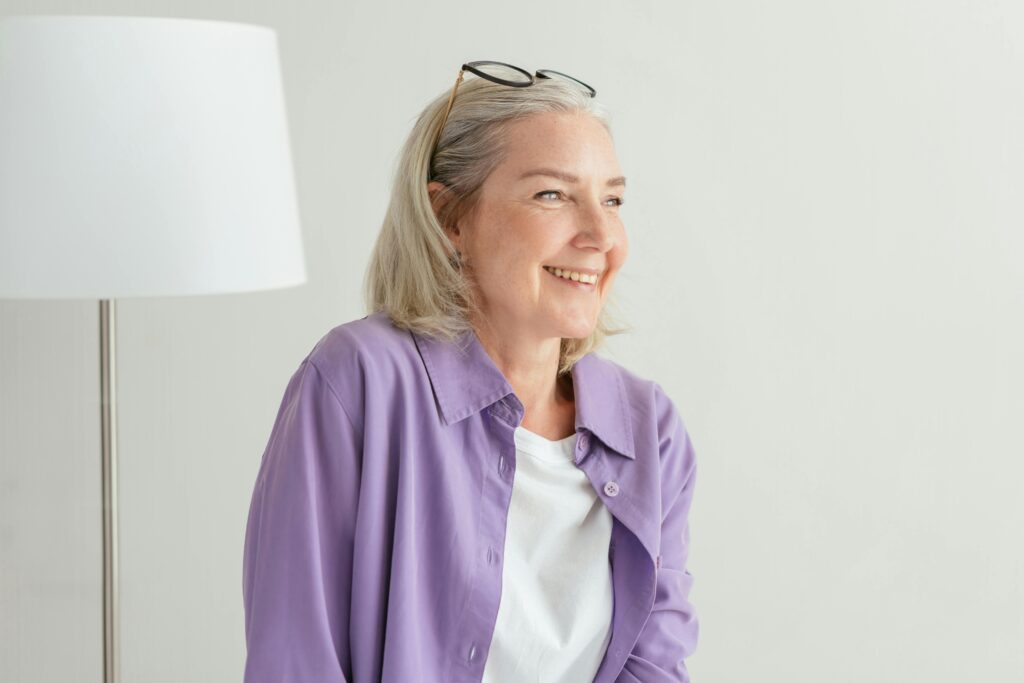DON’T BE PART OF THE STATISTICS!
Currently more than 55 million people have dementia worldwide. Every year, there are nearly 10 million new cases. (March 15, 2023). This means someone in the world develops dementia every 3 seconds. This number will almost double every 20 years, reaching 78 million in 2030 and 139 million in 2050, if we keep doing the same thing!
The Alzheimer’s Association estimates that 6.7 million people of all ages have Alzheimer’s disease in the United States.
WHAT TO DO TO PREVENT AND REVERSE DEMENTIA/ALZHEIMER’S AND OTHER NEURODEGENERATIVE DISEASES?
Alzheimer’s is a progressive brain disorder in which you lose the ability to remember memories, solve problems and react appropriately and lovingly. In other words, the brain wears out!
Recently the American Academy of Neurology has recognized a new and very important precursor to Alzheimer disease (AD) called mild cognitive impairment. This describes the loss of function in the brain’s structure that involves emotions, short-term memory, and movement.
All our brain centers are interconnected by biochemical “text messages” (your neurotransmitters), brain tissue decay in AD and that affects memory and movement gradually. This usually slow decay causes loss of brain tissue in other centers too, such as the smell, taste, balance, vision, and emotional control. In advanced cases, AD patients may require wheelchairs and become unable to leave their beds for the last decade of their life.
Let’s first make sure we are on the same page. Alzheimer’s is a wide range of severity and stages. Like most diseases, doctors try to stage AD according to how it affects daily living. Some important terms you should know:
- Mild cognitive impairment*. This is the stage of early memory and emotional impairment without loss of reality. While these symptoms are noticeable, they have only a mild effect on daily living. But be aware of them, they won’t go away on their own!
- Dementia (from the latin de mentis, meaning “out of one’s mind”. This is an umbrella term referring to memory and emotional impairment that causes a loss of reality.
ALZHEIMER’S DISEASE, NO LONGER A MEDICAL MYSTERY?
Modern Neuroscientists conclude that the root cause of AD can be summed up in one word: mismatch.
AD skyrocketed over the last fifty years, why? During that time, we have been forced to grow and live in a toxic environment for which we were not designed. No organ, especially one as complicated and needy as our brain can survive a mismatch with its environment unscathed. Expose your brain to a lifetime of neurotoxic food, neurotoxic air, and neurotoxic thoughts, and it is no mystery why your brain withers with age.
no mystery why your brain withers with age.
Your brain is the greatest “garden” ever grown, boasting trillions of “plants” (or brain cells). If you don’t feed, fertilize, or irrigate a garden, and keep out pests, the garden withers, and plants shrivel up. The same is true for the brain!
Alois Alzheimer, a German psychiatrist, and neuroscientist gave its name to the disease. In 1901 he delved deeply into a fifty-one-year-old patient’s brain who died after progressively losing her mind and memory. He found out that not only her brain shriveled up, but it was also full of sticky stuff, what is called senile plaques, and numerous tangled nerve fibers. This cerebral atrophy is what causes AD.
New technology has also revealed a lot about what’s going on inside the brain of those living with this disability. Scans which measure blood flow throughout various areas of the brain, reveal two changes: AD brains don’t “light-up!” as much as younger brains, which means there is less blood flow in the brain, and they have shriveled-up, or atrophied, areas.
While what happens to the brains of people with Alzheimer’s is evident in autopsies and scans, even top neuroscientists remain uncertain of AD’s root cause. Yes, sticky stuff, also known as neurofibrillary tangles, builds up in most (though not all) brains with AD. But whether this “metabolic garbage” is the cause of the disease or just symptoms (the result of a faulty garbage-disposal symptoms in the brain) is still unclear.
Neurologists don’t presently agree on exactly what stuff inside the brain actually causes AD, we could say that we agree with Dr Sears which says “our more scientifically accurate and reader-friendly explanation is:
“AD is a progressive buildup of sticky stuff in the blood vessels and tissue of the brain, which eventually wears the brain out!”.
His healthy brain plan that we’ve summarized in a lot of our previous blogs helps keep sticky stuff out of brain tissue and blood vessels – exactly what we need to help prevent Alzheimer’s disease!
WHY DO SENIORS SUFFER FROM AD?
Major contribution to Alzheimer’s disease are three brain changes that usually happen as we age.
- Blood flow lessens, Neurologist calls it vascular dementia, in other words slow and sticky blood flow.
- The blood-brain barrier leaks. This allows more environmental neurotoxins to seep into the brain, where they interfere with neurochemical balance and can lead to early Alzheimer’s.
- The garbage disposal system weakens, this allows more “garbage” or neurofibrillary tangles to build-up in the brain.
Preventing Alzheimer’s disease therefore means preventing, or delaying, these three faults.
 HEALTHY BRAIN AND AD PREVENTION
HEALTHY BRAIN AND AD PREVENTION
Pharmaceutical companies have spent $84 billion developing and testing anti-Alzheimer’s drugs and they have failed. But while pills have failed, self-help skills have succeeded. And it is our commitment to share with you what we learn here and there about Brain-Health Problems and solutions.
Remember, when it comes to preventing, and reversing AD, skills help, pills don’t – at least for now!
“AD is a preventable disease, for which there is no pharmaceutical treatment” Neurologist Dr. David Perlmutter.
GIVE ME THE GOOD NEWS!
Bad news is overpowered by good news, because we now know most of the contributing factors, or “triggers” (neuroscientists are not yet ready to call them “causes”), of AD. If you can tame the triggers, you can turn down your risk and severity of AD. Who doesn’t want that? And the best way to get it is to do – and stick to – our healthy brain program.
| Brain Problems in AD | How Healthy Brain Plan helps |
| Brain tissue shrinks | Grows brain tissue |
| Blood flow slows | Increase blood flow |
| Memory center shrinks | Grows the memory center |
| BGF (Fertilizer for your
Brain) lessens |
Increase BFG |
| Blood-brain barrier leaks | Makes the BBB more selective and productive |
| Metabolic “garbage” builds up | Improves the brain’s garbage disposal system |
| More sticky stuff Is deposited | Decreases sticky stuff! |
MORE GOOD NEWS?
The good news is that while AD is now the number-one worry in our healthcare system, it is also one of the most preventable problems. Today, not only is there more hope for healing from AD, there are also more tools for doing so. There is now light at the end of the dark tunnel.
HAVE YOU TESTED YOUR COGNITIVE FUNCTIONS? At InnerOptimal we will be pleased to give you an assessment and you will know if you are “Above Average” “Average”, “low Average” or “low”. We will see if you must take care of your brain and prevent further hardship!
Scientists have proposed new treatment plans. For your reference, we’ve also included some of our blogs that address these very topics
- Eat good food for your brain and avoid sugars – see our Nutrition blogs and particularly: Food For Thought, Using Keto to Improve Brain Health, Alcohol and Your Brain, and How to Drink Responsibly.
- Your gut is your second brain – What is Leaky Gut?
- Movement and your brain – A Pick in Your Brain Movement.
- Think-change your brain – How You Can Live a More Fulfilling Life.
- Sleep smart to wake up refreshed – What Happens in Your Brain When You Sleep + Sleep is the Best Medication.
- The Surprising Effects of Stress – Particularly when we know that stress becoming chronic generates Anxiety. It’s critical to include stress/anxiety reduction in the program for cognitive optimization. Meditation, yoga, and particularly our Brain Training programs are powerful stress/anxiety reducers and even elimination, lowering cortisol, protecting the hippocampus from atrophy, and increasing the thickness of the cerebral cortex. Check out How to Deal With Anxiety or Anxiety Attacks, How Do We Overcome Them.
- Inflammation and toxins – Stress Anxiety and Consequences
Neurofeedback with tailored sessions is the smartest tool among the smart tools to help prevent or revert AD, to heal from anxiety and depression, cognitive decline including memory, focus/ADHD, as well as eliminate the emotional impact of PTSD including the various traumas and the loss of a loved one. Add Neurofeedback sessions to what you already do, that is the best advice I can give you. Trust me I speak from experience!
NOTHING IS IMPOSSIBLE! APPLIED KNOWLEDGE IS THE KEY TO YOUR SUCCESS! ANY PHYSICAL, EMOTIONAL, OR MENTAL DISCOMFORT OR ILLNESS CAN OR WILL BE REVERSED AND OUR CONSCIOUSNESS INCREASED!
The innerOptimal team wishes you a happy summer!
If this topic is of interest to you, we recommend you read:
- The Healthy Brain book by William Sears, MD and Vincent M. Fortanasce, MD,
- The End of Alzheimer’s Program to prevent and reverse cognitive decline by Dale Bredesen, MD





